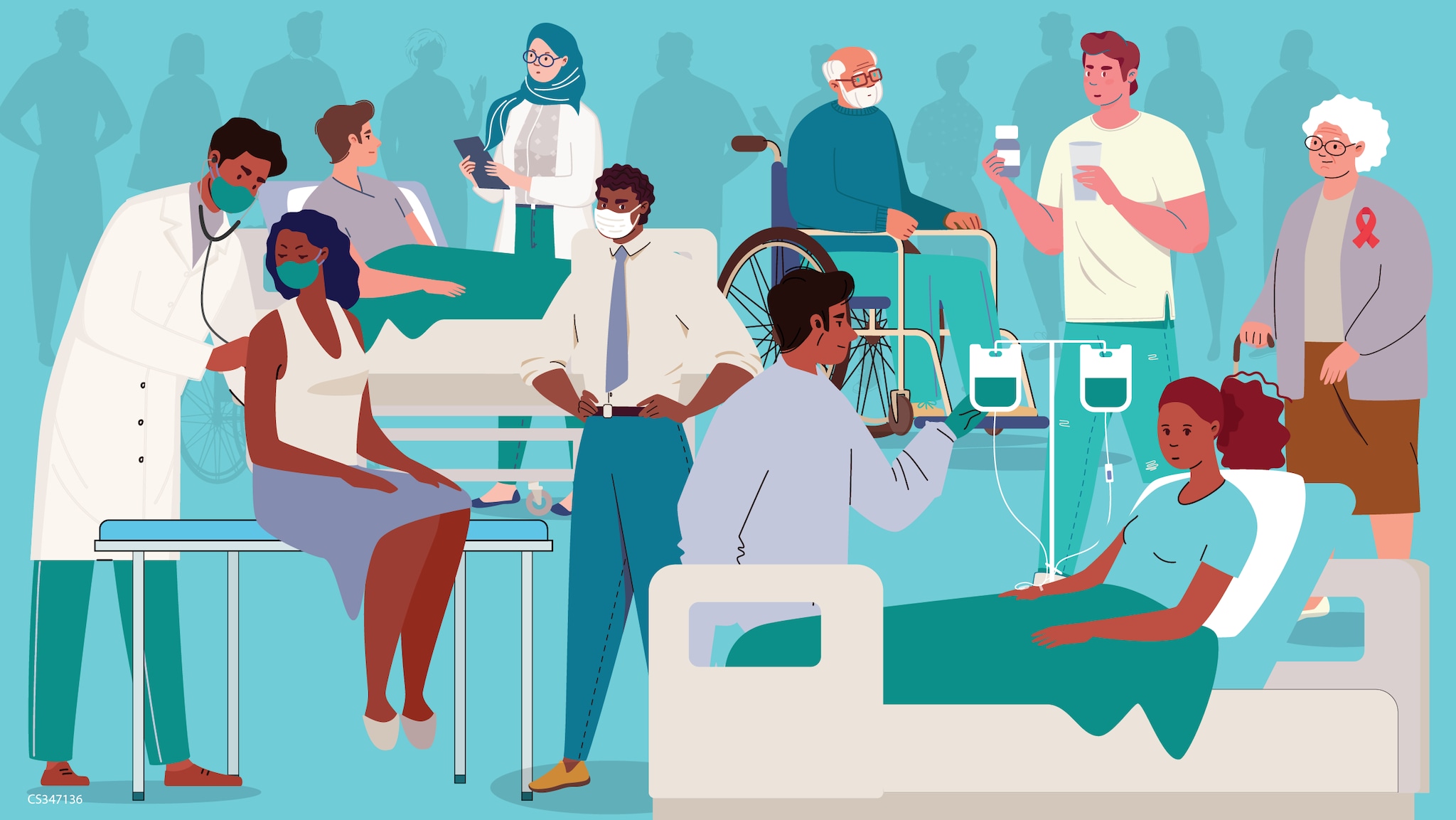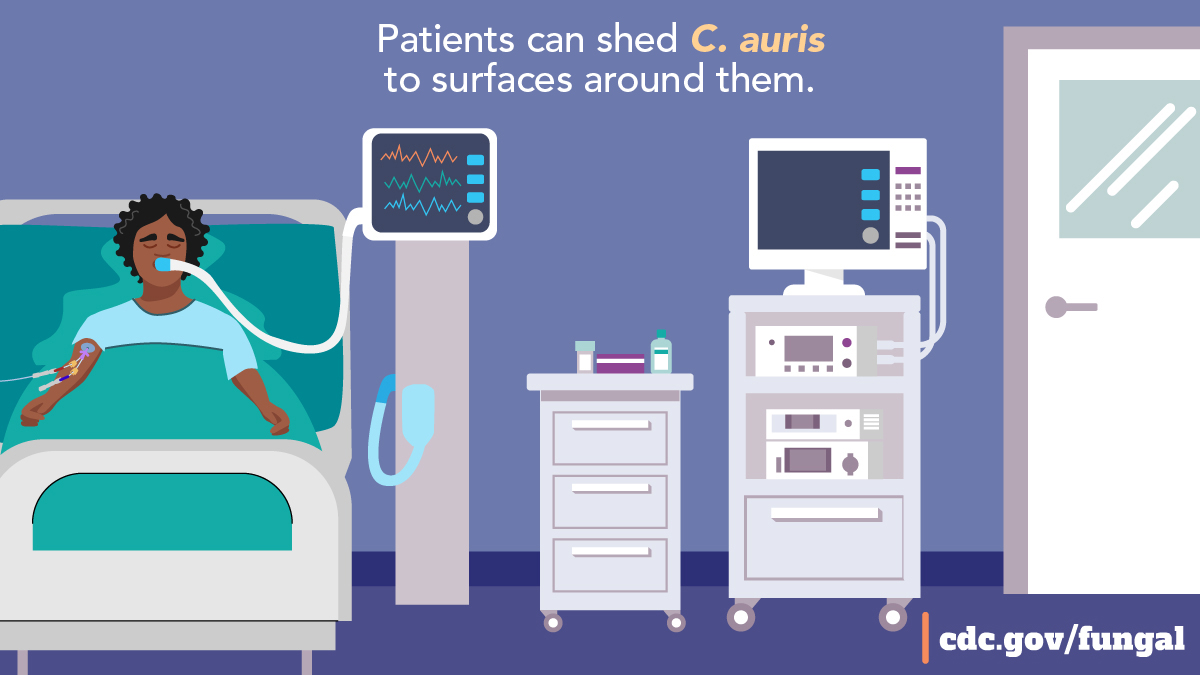Key points
- Certain health conditions and treatments and medications increase risk for many fungal diseases and for more severe infections.
- Socio-economic and geographic factors impact risk of exposure to disease-causing fungi.
- Learn ways to help reduce exposures.
- Talk to a healthcare provider about your or your loved one's risks.

Overview
Many fungal diseases that are mild for most people can be life-threatening for people with certain risk factors. Some fungal diseases are only known to affect people with weakened immune systems.
The immune system fights germs, including fungi, from attacking the body and helps prevent fungal infections. People with some medical conditions or taking certain medications can have weakened immune systems. They are more likely to get fungal diseases, have more severe infections, and have a harder time recovering.
Risk factors
Some medical conditions that increase risk include
- Cancer
- HIV/AIDs
- Chronic lung disease
Certain treatments and medications can also increase risk, such as
- Long-term hospital stays
- Stem cell transplants
- Organ transplants
- Corticosteroids
- High doses of antibiotics
Different fungal diseases may have more specific risk factors. Some diseases have risk factors unrelated to the immune system like race, age, and pregnancy.
Health equity factors like where a person lives, their occupation, and access to care also impact fungal disease risks.
People at increased risk
People with cancer
Chemotherapy and radiation are important treatments for people with cancer. While they destroy cancer cells, they can also lower white blood cell counts. The immune system relies on white blood cells to fight infections. The type of fungal infection and level of risk can depend on the type of cancer and type chemotherapy treatment.
People with organ transplants
People who receive organ transplants need to take anti-rejection medications. These medications work by weakening the immune system so it does not attack the new organ.
Some types of transplants may increase risk more than others, such as small bowel, lung, liver, and heart transplants.
People with stem cell transplants
Stem cell transplants increase risk for fungal infections because they destroy and rebuild the immune system. People can have stem cell transplants using their own cells or cells from a donor.
People who receive donor stem cells are at higher risk for infections.
Like people who have organ transplants, donor stem cell recipients need to take anti-rejection medications. Stem cell recipients are also at risk for Graft-versus-host disease (GvHD). GvHD is a condition where transplanted stem cells attack the hosts' body.
People in healthcare settings
Patients in healthcare settings typically have weakened immune systems, at least for that time. Reasons for hospitalization like being sick, getting intensive treatment (like chemotherapy) and recovering from surgery, all weaken the immune system.
Patients can get infected by fungi getting into wounds or surgical sites. Medical devices, like ventilators and catheters, can create pathways for fungi to get into the body and cause infections.
Some of the more common healthcare-associated infections are invasive candidiasis (specifically candidemia), aspergillosis, and mucormycosis.
Aspergillosis and mucormycosis have been linked to mold outbreaks in hospitals but this is very rare. Mold outbreaks can occur near constructions sites, through contaminated ventilation systems, or laundry.
Candida auris (C. auris) is a fungus that can cause severe, often antifungal-resistant illness in hospitalized patients. Unlike other healthcare-associated fungal infections, it spreads easily and often causes outbreaks in healthcare settings.

Prevention
Environmental
It may not be possible to prevent exposure to some fungi that live in the environment. Fungi can release spores into the air we breathe.
These steps may help lower risks:
- Find out if certain fungal diseases are common in your area.
- Examples include blastomycosis, histoplasmosis, or Valley fever.
- Examples include blastomycosis, histoplasmosis, or Valley fever.
- Avoid situations that increase exposure to dust
- For example, construction sites and dust storms
- For example, construction sites and dust storms
- Wear long pants, and long-sleeved shirts for outdoor activities.

Healthcare-associated
People in healthcare settings can learn about how to be a safe patient. Frequent handwashing is important for patients, visitors, and healthcare providers.
Talk to a healthcare provider
Healthcare providers may prescribe antifungal medications to people at very high risk to help prevent fungal infections.
Many fungal diseases are misdiagnosed. If you think you have a fungal infection or are being treated for an infection that is not getting better, ask your healthcare provider about testing and antifungal treatment.
